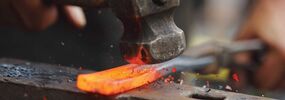Metal Products Sector Sektörü Ürün Grupları
2 Category

Metal and Metal Products
The metal industry plays a crucial role in various fields such as manufacturing and construction. With the advancing technology, metals and metal products are shaped to meet the needs of different industries. Whether it's construction materials, machine parts, or fire-fighting equipment, the scope of metal usage is extensive. In this article, we will provide information about the diversity of metal products and their role in the industry.
Metal and Metal Products: Essential Requirements
Metal, in both its raw and processed forms, is used in many different industries. The metal processing industry involves transforming raw metals, such as steel, aluminum, copper, and iron, into various products. Raw metal products are typically processed in factories to take on different shapes and characteristics. These processed metal products play a critical role in several industrial sectors, including automotive, construction, and machinery manufacturing.
List of Company: A Solution for the Metal Industry
To meet your needs for metals and metal products, the List of Company platform offers a wide range of options. This platform allows you to quickly find companies and suppliers that produce metal products, enabling you to find solutions in the business world efficiently. Many companies related to the metal industry are listed on the List of Company, providing you with access to a variety of metal products, raw metal products, and more.
Fire Fighting Equipment and Metal Products
Fire safety is of utmost importance, especially in industrial sectors. Due to its durability and strength, metal is widely used in the production of fire-fighting equipment. Fire-fighting equipment is generally made of steel because this material is highly resistant to heat and ensures safe usage. Various fire extinguishers, hoses, fire cabinets, and fire escape ladders are produced using metal due to its robust structure.
The Importance of Raw Metal Products
Raw metal products form the foundation of the metal industry. These products are typically obtained in their raw form from factories before undergoing various processing stages. After being processed, these products are transformed into finished goods. Different types and forms of metal, particularly in the construction and automotive industries, have important applications. Raw metal products are used in the construction of various structures, machinery manufacturing, and even the production of household items.
The Future of the Metal Industry
The metal industry continues to grow, driven by advancing technologies and sustainable production methods. As the demand for metal and metal products increases, especially in the construction and manufacturing sectors, the procurement and processing of these products become increasingly important. Platforms like List of Company help meet this demand by offering various supplier options, allowing you to quickly access the latest metal products. Both raw metal products and vital equipment such as fire-fighting tools are critical areas in the industry, and working with the right suppliers is essential.